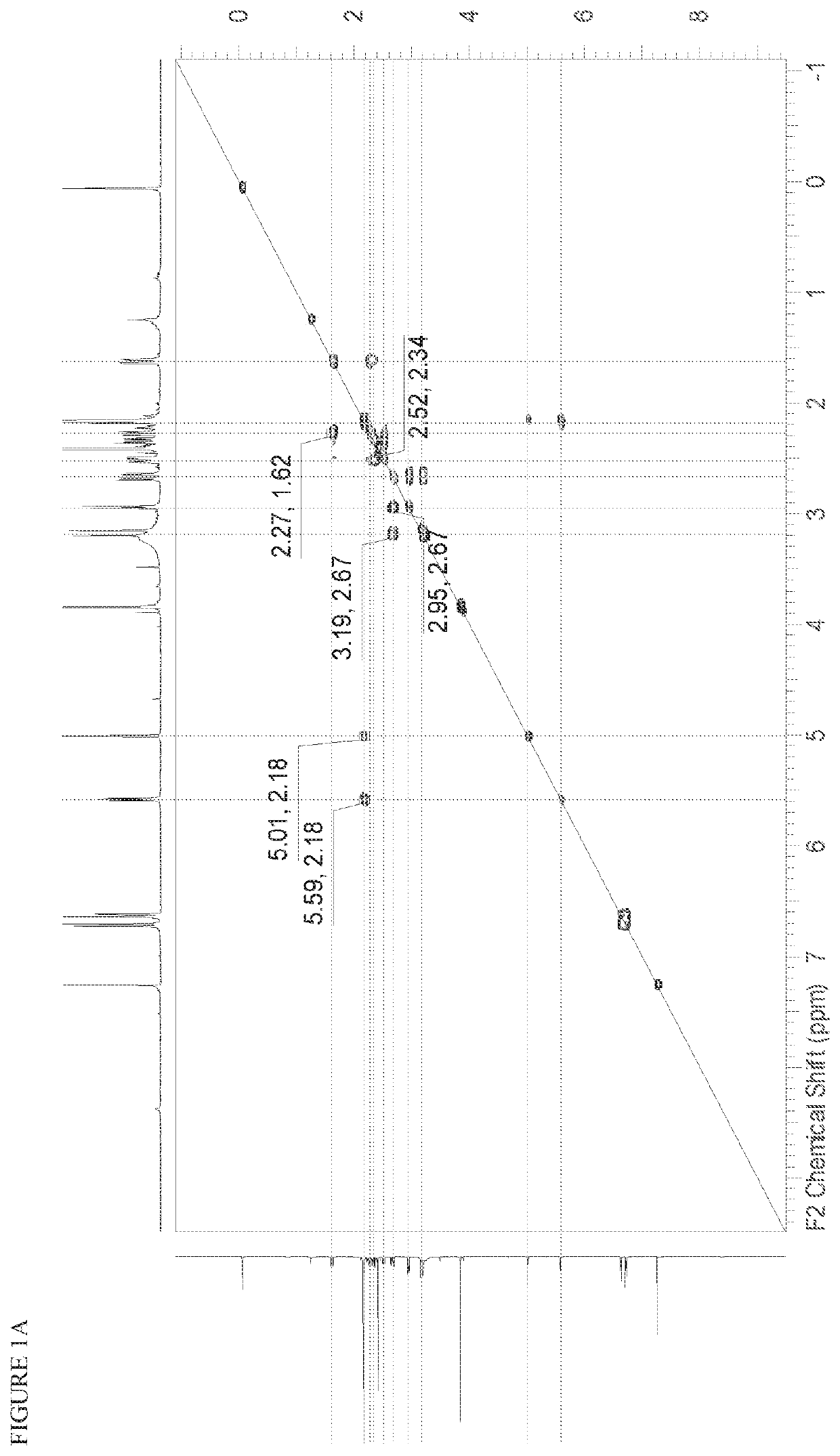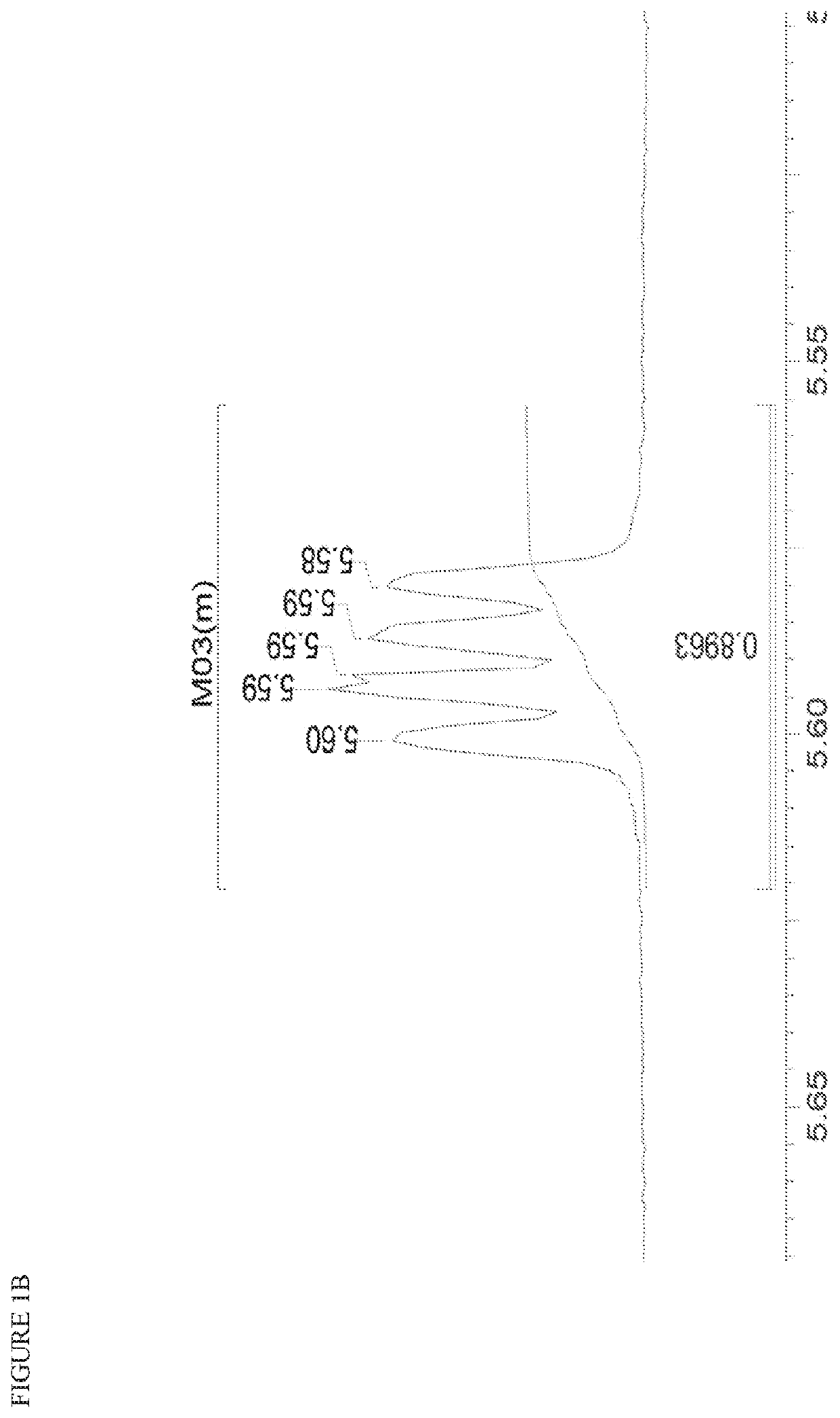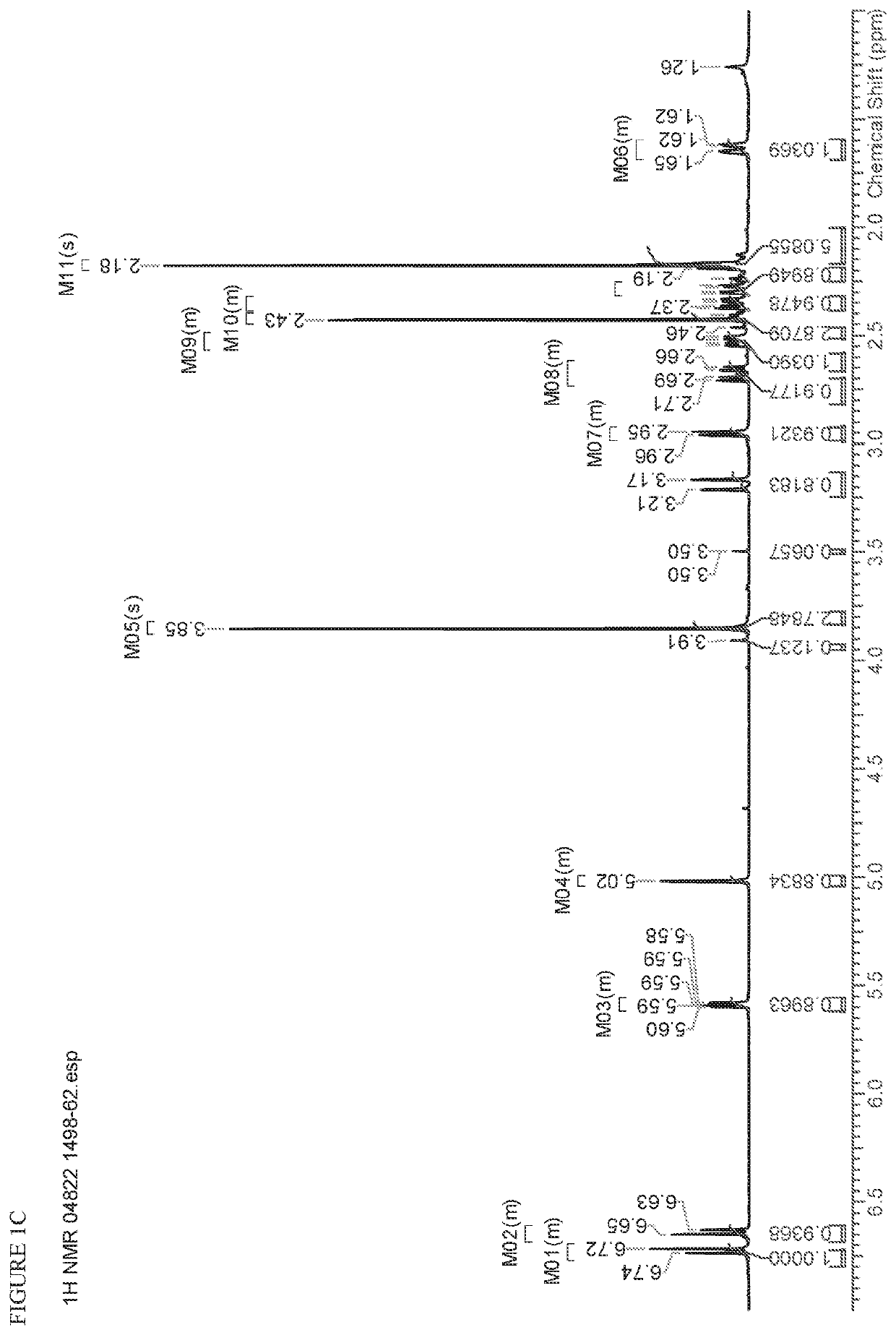Novel opioid compounds and uses thereof
a technology of opioid compounds and opioids, applied in the field of medical chemistry, can solve the problems of abuse, diversion, and potential side effects of opioid use, and achieve the effect of slowing down the onset of opioid activity and slowing down the onset of opioid analgesic activity
- Summary
- Abstract
- Description
- Claims
- Application Information
AI Technical Summary
Benefits of technology
Problems solved by technology
Method used
Image
Examples
example 1
Preparation of 6-acetyl oxycodone
[0541]
[0542]Oxycodone free base (0.316 g, 1 mmol) was mixed with LiN(TMS)2 (3 mmol) in anhydrous THF (10 mL) at −78° C. for 30 minutes and stirring was continued at room temperature for 1 hour. The reaction mixture was again cooled to −78° C. and acetic anhydride (0.47 mL, 5 mmol) was added to this reaction mixture. The reaction was stirred overnight at room temperature and then concentrated under reduced pressure. The residue was neutralized with saturated NaHCO3, and extracted with DCM (3×15 mL), followed by MgSO4 drying, filtration and concentration to give an amber oil as a crude product.
[0543]A portion of the crude product was purified by preparatory HPLC under the following conditions and parameters:
[0544]Column type: Gemini 5 μm NX-C18 110 Å (Vendor: Phenomenex part#00F-4454-N0); size: 150×10 mm
[0545]HPLC Method:
[0546]Instrument: Agilent 1100 Series LC / MS instrument
[0547]Column Temp: 25° C.
[0548]Detector Wave length: 250 nm
[0549]Concentration:...
example 2
Preparation of 6-PEG oxycodone
[0559]
[0560]Oxycodone free base (0.316 g, 1 mmol) was mixed with LiN(TMS)2 (3 mmol) in anhydrous THF (20 ml) at −78° C. for 30 minutes followed by stirring at room temperature for 30 minutes. The solution was re-chilled to −78° C. and a solution of an acetyl chloride derivative, made by reacting 2-[2-(2-methoxyethoxy)ethoxy]acetic acid (30 mg, 3 mmol) with 3 eq. of oxalyl chloride, was added to this reaction mixture. The reaction was let stir overnight and warm up slowly to room temperature. Based on LCMS, the conversion for the title compound was about 44%. The reaction mixture was rotary evaporated and re-dissolved in 20 ml of DCM. Saturated sodium bicarbonate solution was added until the aqueous layer was neutralized. After extracting the mixture with DCM (20 mL×3 times), the combined organic layer was dried over MgSO4 and concentrated under reduced pressure affording an amber oil 0.85 g. A portion of the residue was purified by preparatory HPLC to g...
example 3
Preparation of 6,14-bis-lauroyl oxycodone
[0562]
[0563]Oxycodone (0.3415 g), 4-(dimethylamino)pyridine (0.3475 g) and lauroyl chloride (7 mL) were stirred under nitrogen and heated to 80° C. for three days. The reaction mixture was then cooled and poured in to water (100 mL). After stirring for two hours, the mixture was neutralized with concentrated ammonium hydroxide (2 mL) and gently extracted with chloroform (50 mL, slight stirring). The aqueous layer was diluted with saturated NaHCO3 solution (25 mL) and extracted with chloroform (25 mL, formed emulsion). After standing overnight to separate the organic layer followed by drying over MgSO4, filtration and concentration under reduced pressure to give 0.39 g of amber oil as the title product. Yield: 53%.
[0564]FIG. 3A and FIG. 3B depict the 1H NMR spectrum and the HPLC chromatogram, respectively, for the title compound.
PUM
| Property | Measurement | Unit |
|---|---|---|
| temperature | aaaaa | aaaaa |
| temperatures | aaaaa | aaaaa |
| temperature | aaaaa | aaaaa |
Abstract
Description
Claims
Application Information
 Login to View More
Login to View More - R&D
- Intellectual Property
- Life Sciences
- Materials
- Tech Scout
- Unparalleled Data Quality
- Higher Quality Content
- 60% Fewer Hallucinations
Browse by: Latest US Patents, China's latest patents, Technical Efficacy Thesaurus, Application Domain, Technology Topic, Popular Technical Reports.
© 2025 PatSnap. All rights reserved.Legal|Privacy policy|Modern Slavery Act Transparency Statement|Sitemap|About US| Contact US: help@patsnap.com



